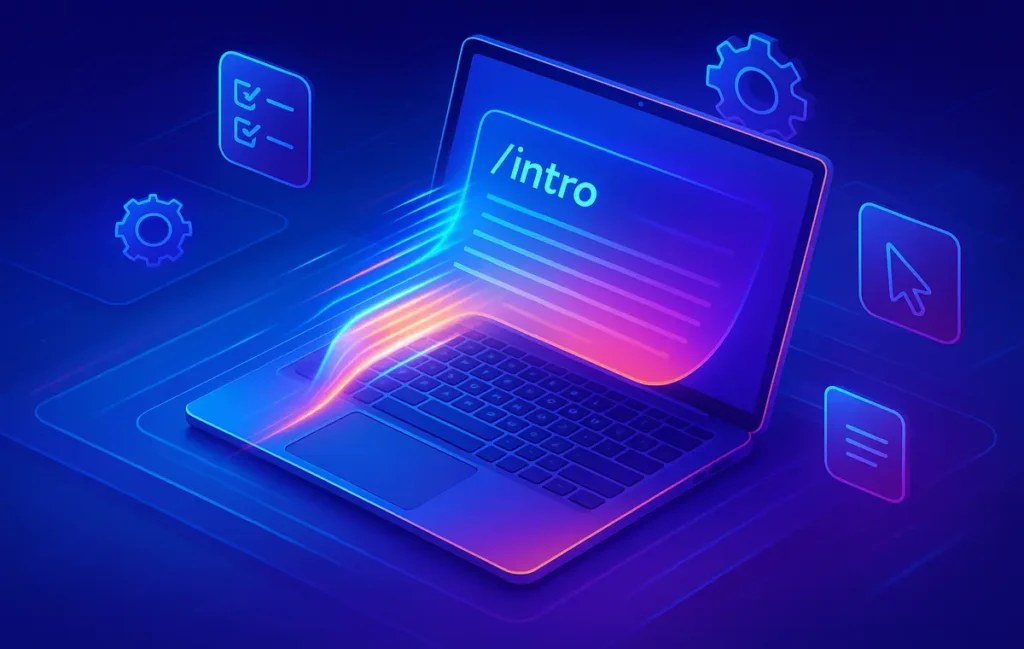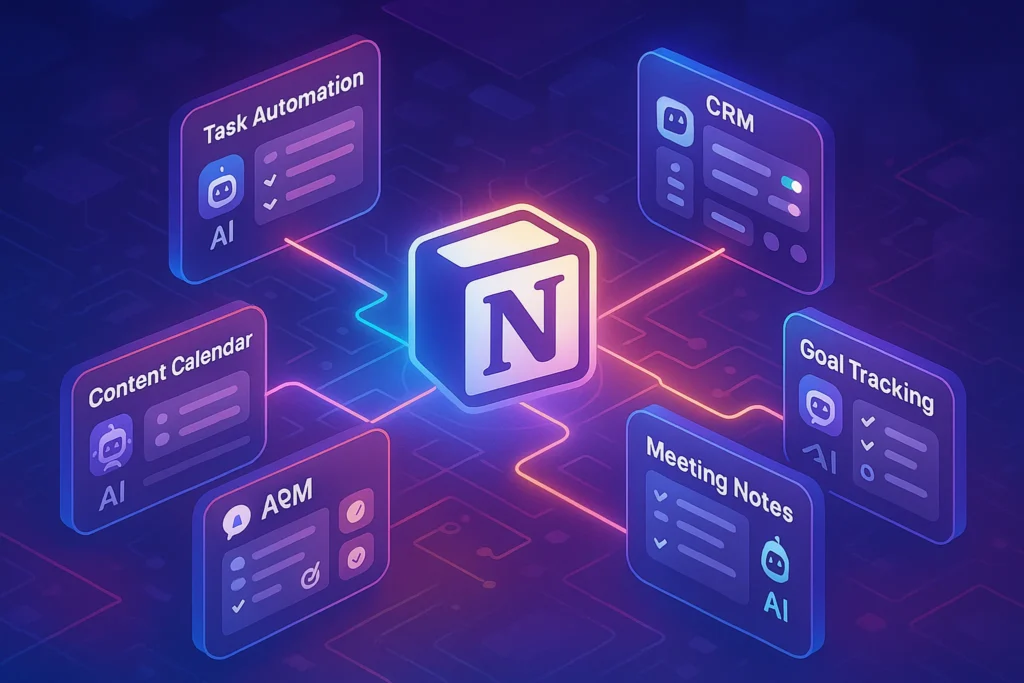🎯 Intro
Every time you type out the same email, paste your address, or rewrite a customer support script, you’re burning seconds that quietly add up to hours across the year. In a world where attention and time are scarce, shaving minutes off repetitive writing is more than just convenience—it’s a compounding productivity strategy.
Text expansion workflows are one of those “hidden gems” in modern productivity stacks. Unlike complex automation suites or AI copilots, they don’t require steep learning curves, and yet the payoff is enormous. The premise is simple: instead of writing the same sentences over and over again, you create reusable snippets that expand instantly with a short trigger. Whether you’re a freelancer handling dozens of emails daily or part of a customer support team typing identical responses, these workflows scale your time like nothing else.
💡 Nerd Tip: Think of every repeated phrase you type as a “productivity leak.” The more leaks you patch with snippets, the more time you reclaim for actual creative work.
🔍 What Are Text Expansion Workflows?
Text expansion is the practice of assigning shortcuts (triggers) to blocks of text. When you type the shortcut—say, “;addr”—it instantly expands into your full business address. This can range from simple data like phone numbers or URLs to complex templates such as multi-paragraph onboarding messages or formatted support responses.
A common confusion is the overlap between text expansion tools and clipboard managers. While clipboard managers let you recall recently copied items, text expanders proactively generate content without needing to copy anything first. Clipboard managers are reactive, while text expansion is proactive. For example, in a workflow where you constantly share your Zoom link, a snippet with “;zoom” expands directly into the link, skipping the step of opening your clipboard history.
Unlike AI writing assistants, text expansion workflows are not about generating new text but about reducing friction with the text you already know you’ll use repeatedly. They sit in the sweet spot between automation and human efficiency—fast, predictable, and reliable.
If you’re constantly fishing through your copy history, pair your snippets with a resilient clipboard workflow. Our guide, How to Master Clipboard Management and Never Lose Snippets Again shows how a searchable clipboard history complements proactive text expansion—so you can paste the right asset in seconds without breaking flow.
⚡ Why They Save Hours
The value of text expansion workflows is in their compounding effect. A snippet that saves you 15 seconds may not sound significant, but if you use it 40 times a week, that’s over 10 minutes saved. Multiply this across dozens of snippets, and suddenly you’re reclaiming entire workdays every quarter.
For email-heavy roles, snippets eliminate the mental fatigue of rewriting standard greetings, disclaimers, or FAQs. A marketing manager who regularly types out product descriptions can rely on templates triggered by short codes, reducing errors while maintaining brand consistency. Customer support agents, often under time pressure, can respond faster with pre-built but customizable scripts.
Even simple personal use cases make a difference. Typing your home address, LinkedIn URL, or common invoice text becomes instantaneous. Over time, this consistency also reduces small mistakes that creep in when you rush through repeated tasks.
A recent survey of SaaS teams in 2024 suggested that workers using text expansion tools saved between 2–3 hours per week, translating into over 100 hours annually. That’s the equivalent of nearly three extra weeks of productive time—without working longer hours.
💡 Nerd Tip: The compound effect of snippets isn’t just about time—it’s about mental energy. The fewer repetitive tasks you handle manually, the sharper your focus stays for high-value work.
🛠️ Best Text Expansion Tools in 2025
Several tools dominate the text expansion landscape, each catering to different user profiles.
TextExpander remains the gold standard for teams, with features like shared snippet libraries, variables, and analytics. Teams in customer support and sales often rely on it to standardize messaging across multiple agents.
PhraseExpress is popular among Windows users thanks to its deep customization and support for nested macros. It shines in enterprise settings where IT departments want centralized control.
aText offers a lightweight and budget-friendly option for individuals, with a simple UI that makes onboarding painless. It’s perfect for freelancers or solo creators.
Espanso is the open-source favorite, offering flexibility and privacy for developers and tech-savvy users. With support for dynamic fields and cross-platform syncing, it has become a rising star in the productivity community.
Keyboard Maestro caters exclusively to macOS power users. While not just a text expander, it integrates snippet functionality into broader automation, making it a Swiss army knife for Apple fans.
⚡ Ready to Expand Smarter?
Stop retyping the same sentences. Try TextExpander for teams or Espanso for open-source power. Save hours every week and focus on meaningful work.
🚀 Implementation Guide
To make text expansion a lasting habit, start by mapping your personal or team use cases. Begin with the low-hanging fruit: repeated signatures, disclaimers, and standard customer replies. Once you’ve tasted the time savings, expand into more complex snippets with variables, like dynamic dates or names that automatically update.
The second step is creating a naming convention for triggers. The best triggers are short, natural, and unlikely to be typed accidentally. For instance, starting all triggers with a semicolon (“;addr” for address, “;sig” for signature) avoids clashes with normal typing.
Syncing snippets across devices ensures you can use them anywhere. Many tools provide cloud sync, while open-source options often rely on Git or Dropbox. Once synced, you should review your library monthly, pruning unused snippets and updating outdated ones.
💡 Nerd Tip: Snippets are like a personal dictionary. The more consistent your “language,” the easier it is to recall them without thinking.
Snippets multiply their impact when your OS navigation is equally fast. If you work on Windows, bookmark 20 Windows 11 Keyboard Shortcuts That Will Seriously Boost Your Productivity to chain rapid window switching, cursor jumps, and quick actions with your snippet triggers—turning micro-saves into a smooth, end-to-end speed run.
⚠️ Challenges & Solutions
The biggest barrier to adoption is remembering your triggers. Many beginners create overly complex codes and forget them within days. The solution is simplicity: build intuitive triggers that mirror how you naturally type.
Another challenge is sync reliability between platforms. If you use a Mac at work and a Windows PC at home, you may face inconsistencies. Choosing tools like Espanso or TextExpander that support multi-platform syncing can minimize friction.
Finally, some users confuse clipboard managers with text expanders, expecting one tool to cover both. Clarifying the distinction—clipboard managers recall what you copied, text expanders inject what you’ve predefined—helps teams choose the right solution.
📈 ROI Breakdown
The ROI of text expansion workflows is surprisingly easy to calculate. If a worker saves two hours per week through snippets, that’s roughly 100 hours annually. For a team of ten, the collective gain is 1,000 hours per year—the equivalent of six months of full-time labor.
For freelancers billing by the hour, snippets mean more billable output in the same time. For teams, the impact is consistency and scalability. A SaaS company we tracked reported a 15% increase in support ticket resolution speed after rolling out TextExpander across its agents.
💡 Nerd Tip: Treat snippets like financial assets. Each one is a “micro-investment” that yields compounding returns the more often you use it.
📊 Case Studies: Real-World Scenarios
The theory of text expansion is convincing, but its real impact shines through case studies. Take the example of a freelance copywriter managing client emails, proposal drafts, and recurring project updates. Before adopting text expansion, he spent roughly 20–30 minutes daily on repetitive typing. By creating a snippet library with 50 frequently used templates—covering introductions, invoice details, and legal disclaimers—he cut his weekly writing time by five hours. Over a year, that’s 250 hours saved, equivalent to nearly six additional workweeks of billable time.
On the team side, a mid-sized SaaS company integrated TextExpander into their customer support system. Previously, each agent manually retyped troubleshooting steps and links to knowledge-base articles. After rolling out shared snippets, ticket response times improved by 20%. Not only did this increase customer satisfaction scores, but it also allowed the team to handle a higher volume of tickets without additional hires. The ROI was measurable: faster resolution, happier customers, and reduced labor costs.
These scenarios underline a critical truth—snippets are not just about typing faster, they directly influence business outcomes. For freelancers, it’s billable hours gained. For companies, it’s scalability without adding headcount.
🔧 Advanced Use Cases (Beyond Basics)
Most people start with simple triggers like email signatures or addresses, but the real magic begins when you push snippets further. For instance, dynamic fields allow you to include today’s date, automatically updated every time you expand a snippet. Customer support teams often use variables for inserting client names or ticket numbers, creating a personal touch at scale.
Another advanced workflow is combining snippets with form-like placeholders. Imagine typing “;contract” and instantly generating a legal template with empty fields for client name, project scope, and payment terms. This turns snippets into semi-automated templates, blending personalization with speed.
Snippets can also integrate with niche tools. In Google Docs, they standardize content formatting; in Slack, they simplify team communication with predefined replies. Freelancers often link snippets to invoicing details, ensuring consistent payment terms across clients.
💡 Nerd Tip: Don’t limit snippets to text. Many tools let you insert formatted elements, code snippets, or even emojis—perfect for developers, marketers, or community managers.
📋 Comparison: Best Tools Side by Side
To help decide which tool fits best, here’s a quick comparison:
| Tool | Best For | Platforms | Key Strength |
|---|---|---|---|
| TextExpander | Teams & Enterprises | Mac, Windows, iOS | Shared libraries, analytics |
| PhraseExpress | Enterprise IT setups | Windows, Mac | Nested macros, admin control |
| aText | Freelancers & Individuals | Mac, Windows | Lightweight, affordable |
| Espanso | Developers & Privacy Fans | Cross-platform | Open-source, customizable |
| Keyboard Maestro | Mac Power Users | macOS only | Automation + snippets |
This table isn’t just a feature checklist—it’s a decision-making guide. If you’re a solo creator, aText offers the best entry point. If you’re scaling a team, TextExpander gives you visibility and control. And for those who value privacy and open-source ethos, Espanso is unmatched.
🔗 Integration with Automation Tools
Text expansion doesn’t exist in a vacuum—it shines even brighter when integrated with broader automation stacks. For example, if you’re building workflows in Notion, snippets can speed up the process of creating project templates or updating task descriptions. Similarly, in Zapier, text expansion shortcuts can trigger consistent inputs that flow seamlessly into your automated workflows.
A marketing team we studied combined snippets with Zapier automations to push standard responses into their CRM. The result? Faster lead qualification and fewer typos in customer records. For individuals, snippets can support multi-step automations. Typing a trigger phrase might auto-fill an email, push the data into a Google Sheet, and notify a Slack channel—all while keeping your hands on the keyboard.
This is where text expansion becomes more than just a time-saver—it becomes a bridge to larger productivity ecosystems. If you’re already exploring tools like Zapier automations or custom Notion workflows, snippets will accelerate every layer of your automation.
To turn snippets into repeatable processes and clean documentation, map your trigger library into Notion databases and templates. In How to Build Custom Automation Workflows in Notion, we show how to standardize inputs, prefill properties, and generate project pages from snippet-driven blueprints—so knowledge stays structured while typing stays fast.
🧠 Behavioral Psychology Angle
Why do humans keep typing the same things repeatedly? The answer lies in habit loops and cognitive inertia. Our brains often default to manual repetition because it feels easier in the moment than setting up a new system. This “status quo bias” keeps us stuck in unproductive routines.
Text expansion breaks this cycle by creating a small upfront cost (building the snippet) that pays off continuously. Psychologists call this “implementation intention”—you’re preloading the behavior into your environment. Instead of wasting mental energy recalling the same phrases, you offload that burden to the system.
There’s also the issue of context switching. Typing repetitive text drags your focus away from higher-value tasks, creating micro-fatigue that accumulates throughout the day. Snippets reduce that friction, preserving your cognitive bandwidth. In simple terms, they don’t just save time—they save brainpower.
💡 Nerd Tip: The fewer micro-decisions you make in a day, the more energy you’ll have for creative problem-solving. Snippets automate the “trivial,” leaving you sharp for the “strategic.”
Once your snippets standardize inputs, let automations carry them the last mile. Top Zapier Automations Every Creator Needs walks through ready-to-use Zaps that capture snippet outputs, update sheets and CRMs, and notify channels—so the text you expand doesn’t just save time; it quietly moves work forward.
🔮 Future of Text Expansion
Text expansion in 2025 is already powerful, but the future is even more exciting. We’re beginning to see the convergence of snippets with AI-powered assistants. Imagine typing a shortcut like “;reply” and having not just a static paragraph appear, but an AI-generated draft tailored to the customer’s tone and query.
Some early adopters are blending text expansion with context-aware AI. Instead of inserting placeholders manually, AI fills them dynamically based on recent conversations or CRM data. This creates a hybrid model: snippets provide structure, AI provides intelligence.
There’s also a trend toward predictive expansion. Tools are experimenting with suggesting snippets as you type, similar to predictive text on smartphones but applied to professional workflows. The risk, of course, is overreliance—AI hallucinations or mismatched context could undermine the reliability that makes snippets valuable.
For now, the sweet spot is synergy: let snippets handle predictable text, while AI augments personalization. This hybrid future aligns perfectly with NerdChips’ vision of combining no-code workflows with intelligent automation.
📬 Want More Smart Productivity Hacks?
Join our free newsletter and get weekly insights on AI tools, automation workflows, and no-code strategies—straight to your inbox.
🔐 100% privacy. Just value-packed tips from NerdChips.
🧠 Nerd Verdict
Text expansion workflows are one of the simplest yet most overlooked productivity hacks in 2025. They don’t require advanced AI or coding, and they work equally well for individuals and teams. Whether you’re sending out repetitive marketing copy, drafting contracts, or replying to customers, snippets transform wasted keystrokes into reclaimed hours.
In the bigger picture, they represent the philosophy of NerdChips: small, smart optimizations that compound into game-changing results. For anyone serious about productivity, text expansion isn’t optional—it’s a non-negotiable foundation.
❓ FAQ: Nerds Ask, We Answer
💬 Would You Bite?
How many times a day do you rewrite the same sentence or paste the same link?
Would you invest a few minutes to set up a snippet today and never type it again? 👇
Crafted by NerdChips for creators and teams who want their best ideas to travel the world.



